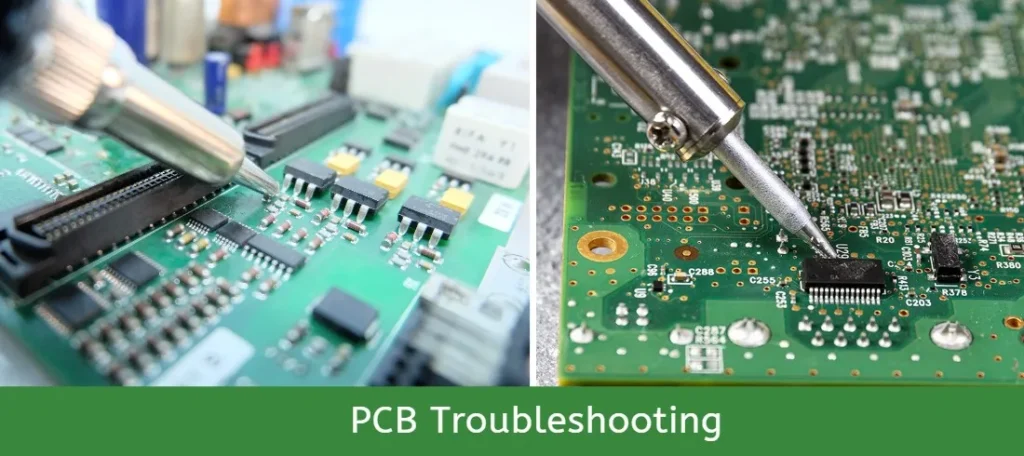lead protrusion per ipc on today technology the world of technology is ever evolving, with innovations emerging at breakneck speed. Amidst this constant change, one critical aspect often flies under the radar: lead protrusion per IPC standards. Understanding this concept can be a game-changer for manufacturers and engineers alike, particularly as we dive deeper into the realm of emerging technologies. Proper lead protrusion not only ensures optimal performance but also upholds reliability in devices that increasingly define our modern lives. Let’s explore why this seemingly small detail holds immense significance in today’s tech landscape and how adhering to IPC guidelines can make all the difference.
Importance of Lead Protrusion per IPC
Lead protrusion per IPC standards is crucial for ensuring the integrity of electronic connections. These guidelines provide a framework that helps manufacturers achieve optimal solder joint performance.
Proper lead protrusion enhances the mechanical strength of components, reducing the likelihood of failure during operational stress. This strength becomes increasingly vital as devices become smaller and more complex.
Moreover, adhering to IPC standards can significantly improve manufacturability. It simplifies assembly processes and minimizes defects that could arise from inconsistent lead lengths.
In an era where reliability is paramount, particularly in sectors like automotive and medical technology, understanding lead protrusion’s role cannot be overlooked. It directly influences how well devices function under various conditions over time, making it a cornerstone for quality assurance in emerging technologies.
Definition of Lead Protrusion and IPC Standards
Lead protrusion refers to the length of a lead that extends beyond the surface of an electronic component. This measurement is crucial for ensuring proper connection when components are mounted onto circuit boards.
The IPC, or Institute for Printed Circuits, establishes standards that guide manufacturers in producing reliable and consistent electronic assemblies. These standards outline acceptable tolerances for lead protrusion, helping prevent issues such as poor solder joints and electrical failures.
By adhering to IPC guidelines, manufacturers can guarantee better performance and longevity of their products. Correctly measured lead protrusion contributes significantly to overall device functionality and reliability in a variety of applications, from consumer electronics to complex industrial systems.
Advantage of Lead Protrusion and IPC Standards
Lead protrusion plays a crucial role in enhancing the overall quality of electronic assemblies. By adhering to IPC standards, manufacturers ensure that lead lengths are optimized for soldering processes. This leads to stronger mechanical connections.
Proper lead protrusion also minimizes the risk of defects during assembly and testing. When components fit correctly, it reduces rework and scrap rates, saving time and resources.
Furthermore, compliance with IPC guidelines fosters better interoperability between various devices. As technology becomes more integrated, having standardized practices ensures compatibility across different platforms.
The advantage extends beyond manufacturing; it instills confidence among consumers regarding product reliability. When companies commit to these standards, they demonstrate a dedication to high-quality performance in their products.
Importance of Lead Protrusion in Emerging Technologies
The rapid evolution of technology brings new challenges, particularly in the design and manufacturing of electronic components. Lead protrusion plays a critical role in these advancements.
As devices become more compact and complex, ensuring optimal lead protrusion is essential for achieving reliable connections. This is especially true for emerging technologies like 5G, IoT devices, and wearable tech.
Proper lead protrusion facilitates effective soldering during assembly processes. It minimizes the risk of weak joints that can compromise device functionality over time.
Moreover, with increasing miniaturization trends, adhering to IPC standards becomes vital. These guidelines ensure that all components meet specific quality benchmarks necessary for today’s competitive market.
Incorporating correct lead protrusion practices not only enhances performance but also significantly impacts product lifecycle management and customer satisfaction in an ever-evolving tech landscape.
Common Issues with Lead Protrusion on Today’s Technology
Lead protrusion issues can manifest in various ways, impacting electronic devices significantly. One common problem is excessive lead length, which may lead to poor solder joints and unreliable connections. This often results from inadequate manufacturing processes or subpar materials.
Another challenge arises when leads become misaligned during assembly. Misalignment can compromise the overall integrity of a device, causing intermittent failures that are difficult to diagnose.
Corrosion is yet another issue that plagues lead protrusion. Environmental factors can induce corrosion on exposed leads, ultimately jeopardizing performance and longevity.
Thermal expansion also plays a role; temperature fluctuations can exacerbate issues related to lead protrusion by affecting how well components fit together over time.
Understanding these challenges is essential for manufacturers aiming to enhance product reliability in today’s fast-paced technology landscape. Addressing these concerns proactively ensures better outcomes for both producers and consumers alike.

The Role of IPC Standards in Ensuring Quality and Reliability in Emerging Technologies
IPC standards play a crucial role in maintaining the quality and reliability of electronic devices. These guidelines provide manufacturers with specific criteria for lead protrusion, ensuring components meet stringent performance benchmarks.
As technologies evolve, so do the complexities in design and manufacturing processes. IPC standards offer a framework that helps mitigate risks associated with emerging technologies. They establish uniformity across industries, enhancing communication between suppliers and manufacturers.
By adhering to these standards, companies can minimize defects and improve product longevity. This is especially important as we see an increase in miniaturized components where precision becomes paramount.
Moreover, IPC standards promote innovation by encouraging best practices among engineers and technicians. This collaboration leads to enhanced designs that can withstand modern challenges while meeting consumer expectations for reliability.
Factors to Consider for Proper Lead Protrusion in Emerging Technologies
When assessing lead protrusion for emerging technologies, one must consider several critical factors. First and foremost, the type of substrate plays a vital role. Different materials respond uniquely to thermal cycling and mechanical stress.
Next, the design of the PCB should not be overlooked. A well-planned layout can significantly reduce issues related to lead protrusion. This includes proper pad dimensions and spacing.
The manufacturing process also deserves attention. Variability in soldering techniques can affect how leads settle post-assembly, leading to potential complications down the line.
Temperature profiles during soldering are another crucial element. Adequate heat management ensures that components adhere correctly without causing excessive protrusion or damage.
Regular inspections throughout production help catch any anomalies early on, allowing for immediate corrective actions rather than costly reworks later in the cycle.
Impact of Improper Lead Protrusion on Device Performance
Improper lead protrusion can significantly hamper device performance. When leads are not adequately aligned or extend beyond acceptable limits, signal integrity may deteriorate. This issue often results in increased resistance and reduced electrical conductivity.
Additionally, improper lead lengths can cause mechanical stress on connections during thermal cycles. Such stress might lead to fractures or intermittent failures over time, compromising the reliability of the device.
Devices with incorrect lead protrusion also face challenges during manufacturing processes like soldering. Inadequate contact between components increases the likelihood of faulty joints, which further affects overall functionality.
Moreover, users may experience inconsistent operation when devices fail to maintain stable connections due to poor lead management. As technology advances and the demand for precision grows, addressing this issue has never been more critical for manufacturers aiming for success in competitive markets.
Steps for Addressing and Preventing Lead Protrusion Issues
Addressing lead protrusion issues requires a proactive approach. First, establish clear guidelines based on IPC standards. This sets the foundation for quality control in manufacturing processes.
Regular inspections are crucial. Incorporate visual checks and use precision measuring tools to monitor lead lengths consistently throughout production. Identifying deviations early can prevent larger problems down the line.
Training staff is equally important. Ensure that employees understand the implications of lead protrusion and how it affects device performance. Regular workshops can keep everyone informed about best practices.
Also, invest in technology that enhances measurement accuracy. Automated systems can reduce human error and provide real-time feedback during assembly.
Create an open feedback loop between engineers and assembly teams. Collaboration fosters innovation in addressing persistent challenges related to lead protrusion while promoting a culture of quality assurance across all levels of production.
Conclusion:
Lead protrusion is critical in today’s technology landscape, especially with the rapid advancement of emerging technologies. The adherence to IPC standards ensures that lead protrusion remains within acceptable limits, promoting device reliability and performance.
As we continue to innovate and push the boundaries of what’s possible, understanding and implementing proper lead protrusion practices will be essential. It helps mitigate issues that could hinder device functionality or longevity. With attention to this detail, manufacturers can enhance product quality while meeting consumer expectations.
The emphasis on quality control through IPC standards cannot be overstated. These guidelines are designed to ensure excellence across various applications—from consumer electronics to high-reliability sectors like aerospace.
By recognizing the significance of lead protrusion per IPC in modern technology, stakeholders can better navigate challenges associated with component assembly and performance optimization. Investing time in addressing potential concerns at the design phase pays off significantly during production and beyond.
As we embrace new technologies such as IoT devices, wearables, or automotive advancements, a clear focus on lead protrusion will support safer and more efficient products for users around the globe. Adapting these best practices now sets a solid foundation for future innovations.










